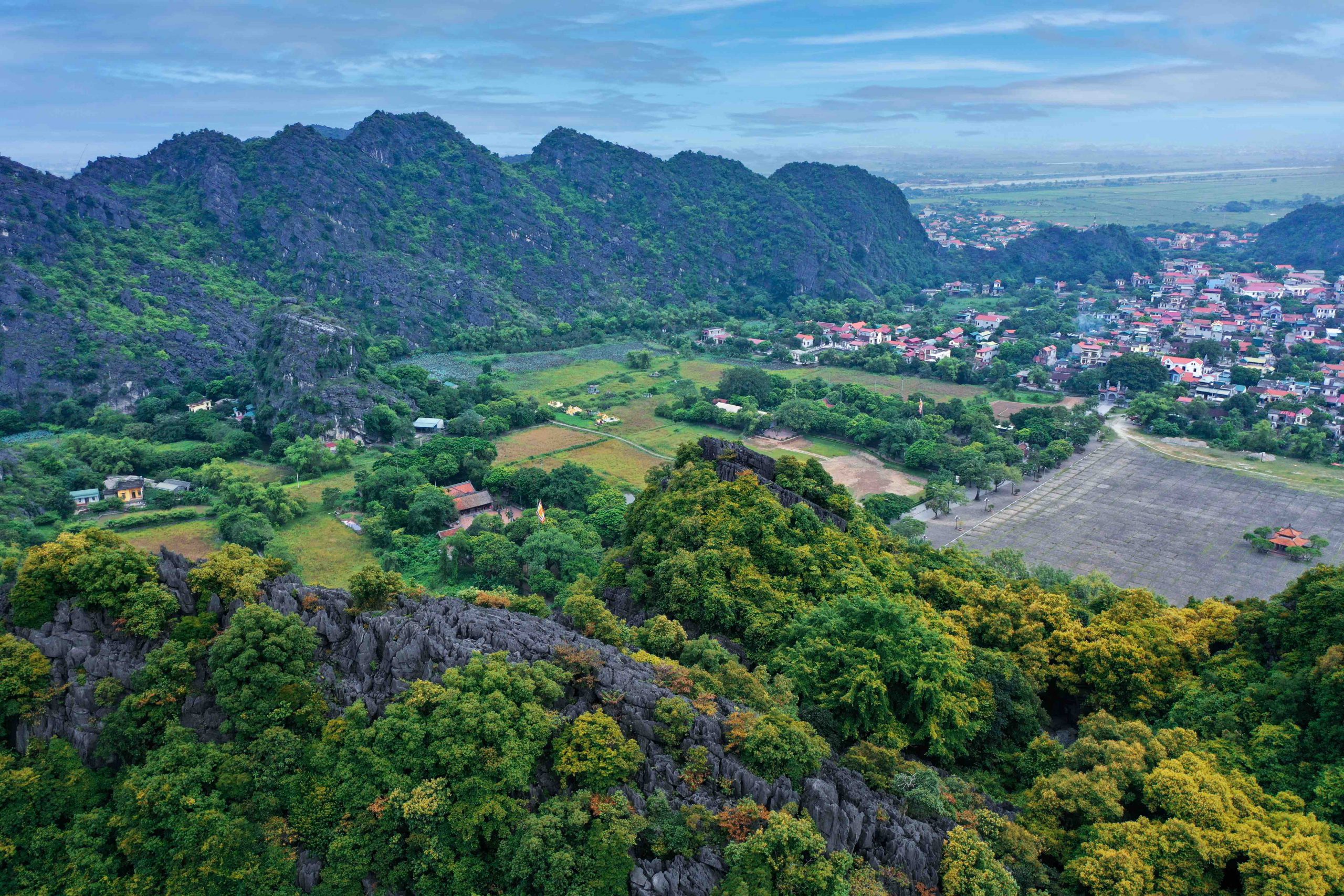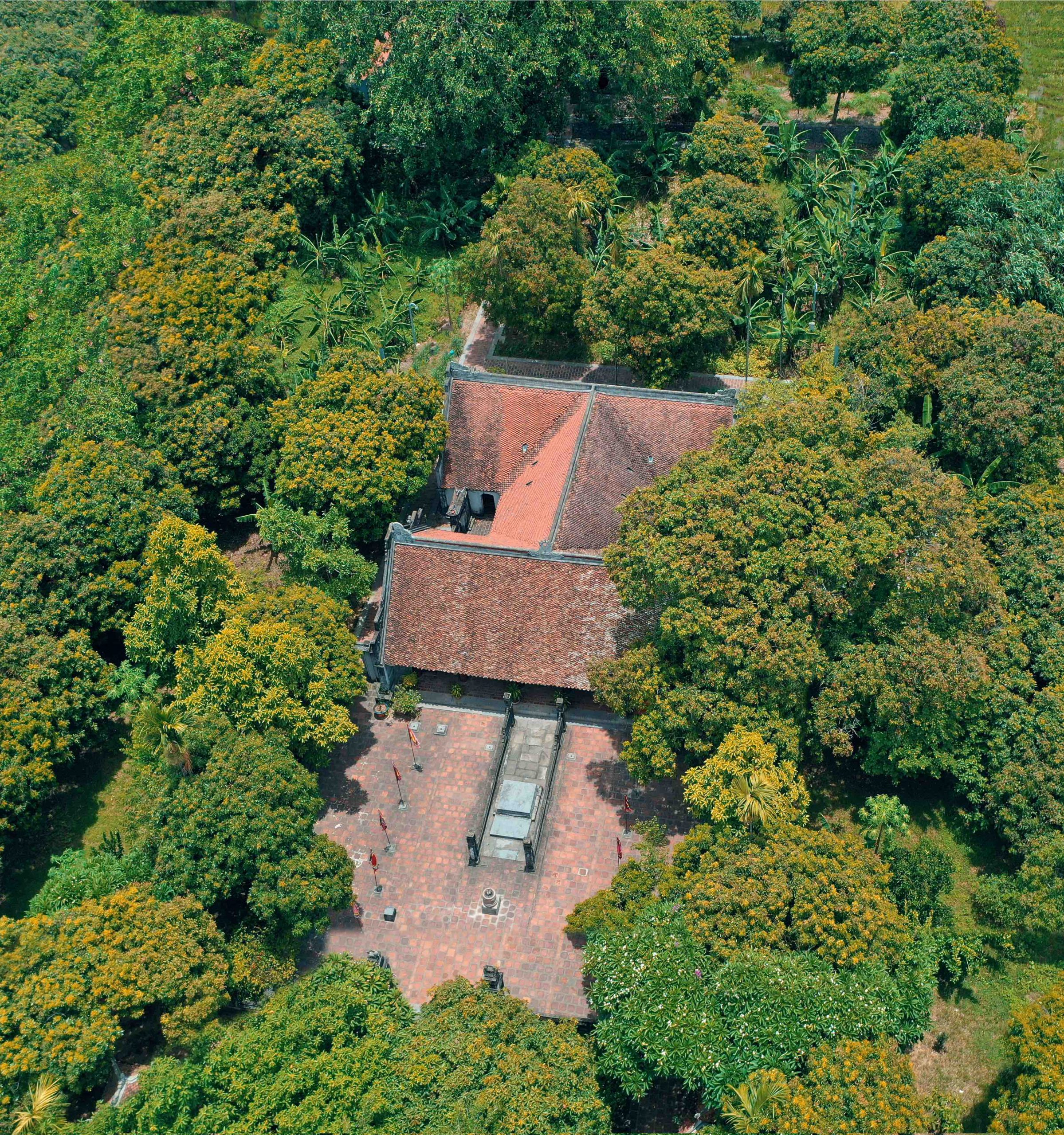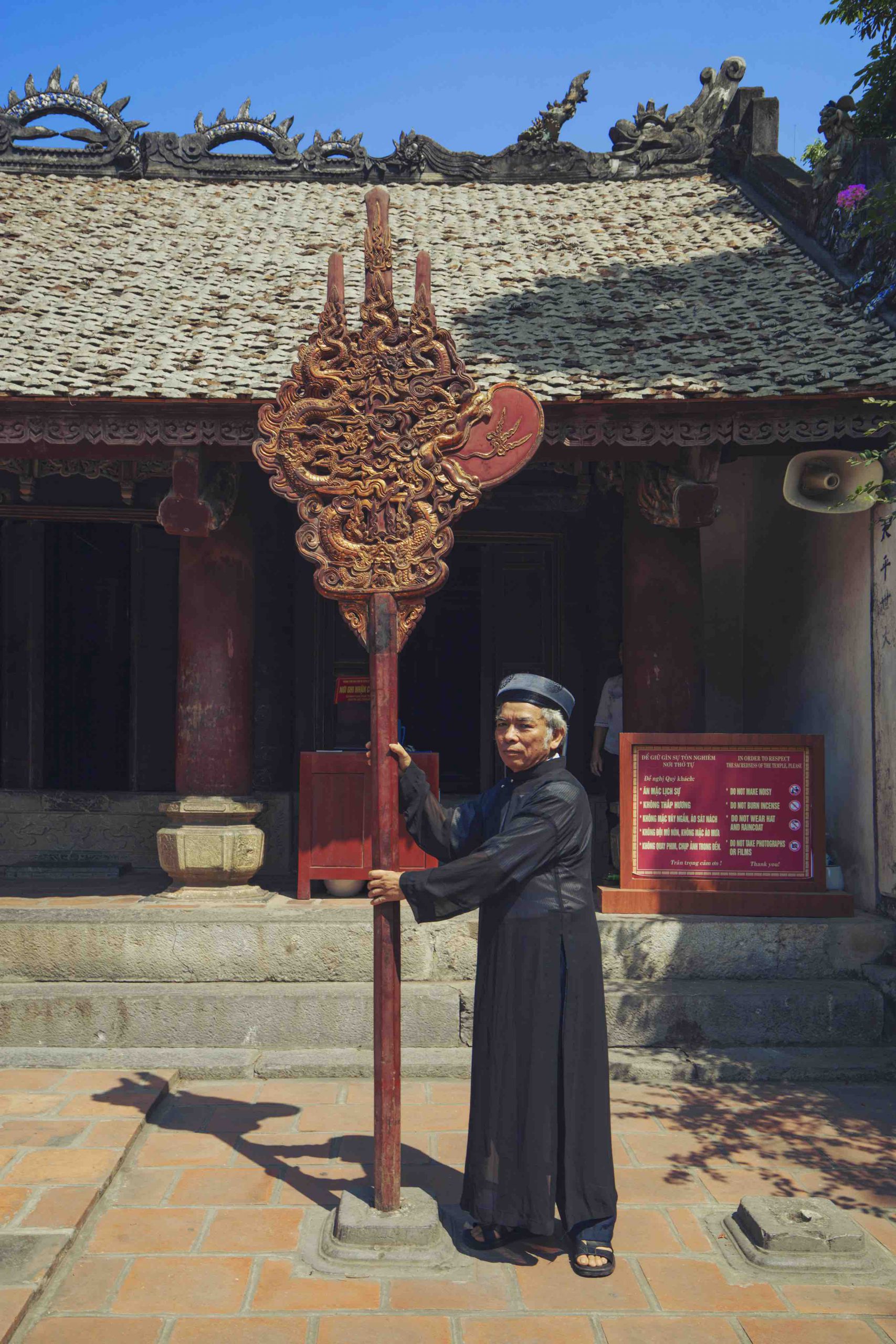Vu Thi Hang
Hoa Lu is renowned for its breathtaking natural beauty. Visitors to the ancient capital, situated within the Trang An scenic complex, can admire the area’s majestic mountains and rivers while delving into the local history, culture, and art. The National Treasures found in Hoa Lu are closely tied to the existence and development of the Dinh (968-980) and Early Le (980-1009) dynasties.

In 973, Dinh Khuong Lien commissioned the creation of 100 stone pillars inscribed with the Sanskrit mantra Usnisa vijàya dhàrani to pray for the well-being of Emperor Dinh Tien Hoang, seek peace for his younger brother, atone for his own sins and aspire for longevity. Made from green stone, these Buddhist pillars stand approximately 140 cm tall. Each pillar consists of six parts: the base, shaft, cushion, lotus pedestal, and lotus bud, all assembled using traditional mortise and tenon techniques. The pillars were erected between 973 and 979. In 1963, the first of these pillars was rediscovered, with subsequent finds scattered throughout the ancient capital of Hoa Lu. The collected pillars are preserved and displayed in the Ninh Binh Museum.
In 995, King Le Dai Hanh commissioned the construction of a pillar at Nhat Tru Pagoda. Although structurally similar to the Dinh-era pillars, this newer pillar is significantly larger, standing at 4.16 meters tall and weighing approximately 4.5 tons. The shaft of the pillar is inscribed with the Thu Lang Nghiem sutra, which extols the enduring nature of the Buddha and the immense power of the Buddha Tathāgata. It also expresses a desire for national stability and peace for the people, reflecting a deep faith in Buddhist teachings.
The Dinh and Early Le pillars attest to the flourishing of Buddhism in Vietnam during the nation’s founding period. With their unique sculptural artistry and significant historical and cultural value, the Dinh pillars and the Nhat Tru Pagoda pillar have been classified as National Treasures.

Not far from Nhat Tru Pagoda, the temples of King Dinh and King Le stand side by side in the heart of Hoa Lu, nestled within a serene landscape of mountains and rivers. According to legend, these two temples were built on the foundations of an ancient palace. They serve as miniature museums of history and art, housing National Treasures of significant cultural, historical, and artistic value.
The pair of dragon thrones at the Temple of King Dinh consists of one throne before the outer gate and one outside the main hall. The stone dragon throne in front of the main hall was crafted during the Chinh Hoa era (1680-1705). Its upper body features a rectangular block resting on a two-tiered base. The decorative motifs on the throne are quite diverse, including swirling patterns, citrus flowers, chrysanthemums, shrimp, fish, and mythical creatures. Notably, a large dragon dominates the throne’s surface. This dragon is distinguished by its elegantly shaped feet, which resemble human hands. Flanking the stone throne are two stone dragons carved in the round, positioned closely beside the throne to enhance the solemnity and grandeur of the worship space. The dragon throne in front of the outer gate of the Temple of King Dinh closely resembles the one before the main hall, except its carvings are softer and more subtly three-dimensional, reflecting a later artistic style from the 18th century.
In addition to these highly artistic dragon thrones, the Temple of King Dinh also features a pair of exquisitely crafted phu viet (ceremonial axes). In Sino-Vietnamese, phu viet (斧 鉞) refers to a large axe or hammer. When used as ceremonial objects, phu viet symbolize weapons. These artifacts are typically placed in temples dedicated to figures (deities) known for their great military achievements. The two ceremonial axes are identical in form and placed symmetrically. These large axes’ bodies are decorated with motifs on the theme of mother and child dragons. Five baby dragons coil around the mother dragon. The axe’s blade takes the form of a jewel, which the mother dragon is swallowing. This jewel emits dazzling light, represented by rays shaped like tongues of fire. The axe’s head features three prongs shaped like pointed dragon tails. In terms of style, these carvings and decorations reflect 17th-century artistic trends.

The paired phu viet in the Temple of King Le date from the early to mid-18th century. They share a similar form and are also arranged symmetrically. The phu viet in the Temple of King Le differ from those in the Temple of King Dinh in their artistic style, layout, and the decorations on the body and axe blades. As a whole, these phu viet form a balanced and symmetrical composition. The axe’s blade has a balanced form, with a curved dragon body. The blade’s surface bears intricate carvings of cloud patterns and rays of light, which symmetrically align with the dragon’s body. One must look closely to see half of the jewel being consumed by the large dragon. Topping the axe is an open structure shaped like two small dragons and a tiger’s face. The carving techniques are meticulous, featuring relief carving, openwork, and high relief.
The dragon motifs on the phu viet in the Temples of King Dinh and King Le evoke legends of dragons swallowing the moon. Dragons symbolize divine power, nobility, respect, and blessings. The dragon associated the jewel is the deity responsible for a region’s weather. This motif is widely used in decorative carvings, architectural ornamentation, and on Vietnamese ceremonial objects. This reflects an agricultural mindset and yearning for favorable rains and bountiful harvests. Due to their exceptional cultural and artistic values, both pairs of phu viet in the Temple of King Dinh and the Temple of King Le have been recognized as National Treasures.
The artifacts in the ancient capital of Hoa Lu that have been declared National Treasures possess unique artistic qualities. Moreover, these treasures serve as valuable resources for current and future generations to learn about and explore the traditions and history of the nation.










